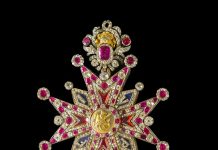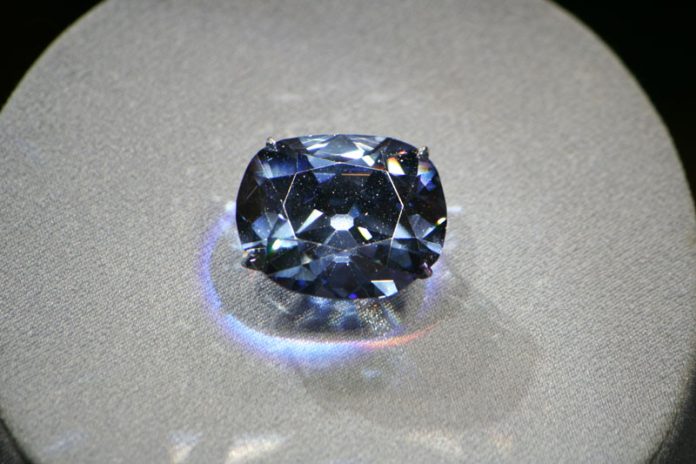
The Hope Diamond curse has been a subject of fascination for decades. While diamonds are traditionally known as symbols of wealth, beauty, and love this large, unusually colored stone that is widely believed to be cursed. Many of those who have owned or simply touched this stone have met tragedy by going insane, suffering serious illnesses, committing suicide, or losing their fortunes—even being executed by guillotine.
This stone, paradoxically celebrated for its beauty yet feared for its curse, is the Hope Diamond. The size of a walnut and a deep blue gem in color, it is the world’s best-known diamond. Over its 370-year-long, often murky history, it has become immersed in legend, stolen at least twice and cut four times. Its owners have included sultans, kings, bankers, jewelers, thieves, a popular stage performer, and a fabulously wealthy heiress.
Since 1958, the Hope Diamond has been a major attraction at the National Museum of Natural History (Smithsonian Institution) in Washington D.C., where it has been viewed by more than 100 million visitors and is currently valued at over $250 million.
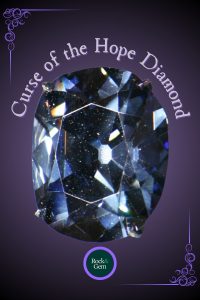
Plucked From the Eye of an Idol
The Hope Diamond’s strange story began in 1653 when French gem merchant Jean-Baptiste Tavernier visited India’s Golconda Sultanate. There he purchased a crudely cut, triangular, flat, blue diamond of extraordinary size—115 carats. According to legend, this diamond, now known as the “Tavernier Diamond,” had been cursed since it previously had been plucked from the eye of a statue of a Hindu idol.
After returning to Europe in 1668, Tavernier sold the diamond to King Louis XIV of France, who ordered the stone recut. Tavernier wrote extensively about the gem before his death in Moscow the following year—when he was reportedly dismembered by a pack of wild dogs.

The “French Blue” and the Guillotine
The 1691 French crown jewel inventory describes the recut stone as “a very big, violet (the period term for “blue”) diamond, thick, cut with facets on both sides and in the shape of a heart with eight main faces.” It weighed 67.1 carats and was valued at the equivalent of $4 million in 2023 dollars. Formally known as the Blue Diamond of the Crown of France and popularly as the “French Blue,” this smaller stone, with its enhanced symmetry and additional pavilion facets, was substantially more brilliant than the original Tavernier Diamond. The French Blue was likely the first large diamond to be cut in a modern brilliant style.
Louis XIV had the blue diamond, along with a 117-carat red spinel and 195 smaller diamonds, set in an elaborate pendant that symbolized the Order of the Golden Fleece, a Catholic order of chivalry. Despite this prestigious setting, the idea that the French Blue was cursed gained credibility with the misfortunes of Louis XIV. Five of his legitimate children died in infancy. And the king himself died in agony of gangrene in 1715.
Setting the Stage
Ownership of the French Blue then passed to Louis XV, a monarch who enjoyed great popularity early in his reign—but his good fortune did not last. He engaged in costly wars that drained the French treasury, weakened royal authority, and set the stage for the French Revolution. Louis XV died a hated man in 1774.
The French Blue then became the property of King Louis XVI and his wife, the infamous Marie Antoinette, both of whom often wore the stone. But when the French Revolution erupted in 1789, the monarchy fell and, in September 1792, Louis was beheaded in a public execution. Marie Antoinette also died at the guillotine four months later.
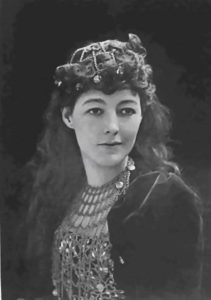
A Convoluted Trail
During the French Revolution, the blue diamond, now widely believed to be cursed, was stolen from a royal warehouse and never seen again, at least not as the French Blue. The history of the stone then became uncertain. In 1812, just as the statute of limitations regarding the theft took effect, a 45-carat blue diamond appeared in the hands of London diamond merchant Daniel Eliason. Amid widespread accusations that this diamond was actually a cut-down version of the stolen French Blue, Eliason committed suicide.
In 1820, Britain’s King George IV acquired the diamond. Following his death in 1830, his bankrupt estate sold the stone to pay off debts. Attention then shifted to London banking heir Henry Philip Hope, who some suspected had secretly bought the diamond from French thieves in the early 1800s. Hope publicly listed the stone in his 1839 gem catalog—only to die just months later.
The Hope Diamond
The blue diamond remained with the Hope family for the next 57 years, the last owner being the American actress, playwright, and concert-hall singer May Yohé (Mary Augusta Yohé, Lady Francis Hope), whose writings and stage productions often called attention to the stone’s purported curse. The diamond was sold in 1896 to settle Yohé’s pressing debts. Many believed that the celebrated singer herself fell victim to the stone’s evil power: After enduring two disastrous marriages, she died in poverty in 1938.
The blue diamond, now known as the “Hope Diamond,” next passed through the hands of several gem merchants and jewelers, and two Ottoman sultans. The stone was then acquired by the prestigious Paris jewelry firm Cartier and director Pierre Cartier, a renowned wheeler-dealer in the gem world, who immediately began seeking a buyer and a quick profit.
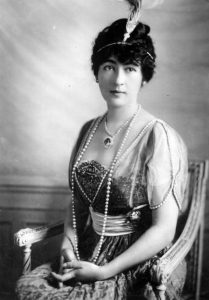
On to America
The story of how the Hope Diamond came to the United States began in 1896 in the gold-mining camp of Ouray, Colorado, where prospector Thomas F. Walsh bought two abandoned claims for back taxes. This purchase turned out to be one of history’s greatest bargains, for the original claim owners had somehow overlooked a massive deposit of phenomenally rich gold ore.
In 1898, Walsh’s daughter Evalyn married Edward “Ned” Beale McLean, heir to The Washington Post newspaper fortune, and became an internationally known socialite with lavish tastes, especially for fine gems. When Thomas Walsh died in 1910, he left his fortune of $3 million ($90 million in 2023 dollars) to his 24-year-old daughter Evalyn Walsh McLean.
Pierre Cartier
Having previously sold fine gems to Evalyn, Pierre Cartier knew that the heiress, now in receipt of her fortune, was a prime candidate to buy the Hope Diamond. Pierre’s first attempt to sell her the stone failed. But he tried again, this time with the diamond set in a striking modern mount surrounded by a three-tiered circlet of dozens of smaller white diamonds.
Also astutely guessing that Evalyn would be fascinated by the stone’s purported curse, Pierre recounted—and likely embellished— its more disturbing details. In 1911, amid great publicity, Evalyn bought the Hope Diamond for $300,000 ($9 million in 2023 dollars). Enamored of the stone, the heiress frequently wore it at balls and parties, at times hanging it around the neck of her Great Dane or hiding it in the furniture and challenging her guests to “find the Hope.”
But in the end, Evalyn also seems to have paid dearly for owning the Hope Diamond: Her husband died in a mental hospital, her firstborn son was fatally struck by an automobile at age nine, and her 24-year-old daughter died of an overdose of sleeping pills.
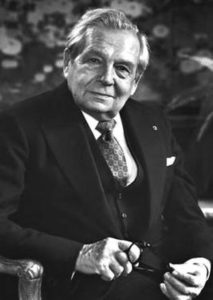
Harry Winston & The Smithsonian
In 1947, New York City diamond merchant Harry Winston purchased the Hope Diamond from Evalyn Walsh McLean’s estate.
For nearly a decade, Winston displayed the stone on his popular “Court of Jewels” tour across North America, showing it at charity balls and on television shows. He ordered a minor recutting of the stone’s pavilion facets to further increase its brilliance—the fourth and last time that the Hope would be cut.
In the mid-1950s, mineralogist George Switzer, an associate curator at the National Museum of Natural History (Smithsonian), proposed establishing a national gem collection with the Hope Diamond as the centerpiece. Switzer asked Harry Winston to donate the stone to the Smithsonian. In 1958, Winston, intrigued by the idea of a national gem collection and perhaps even more so by a monumental tax write-off, agreed.
Winston sent the Hope Diamond from New York City to the Smithsonian in Washington, D.C., by registered, insured first-class mail. And what happened next convinced many that the Hope’s curse was still alive. Shortly after hand-delivering the stone, United States Post Office letter carrier James Todd was seriously injured in two back-to-back automobile accidents—before losing his house to a fire.
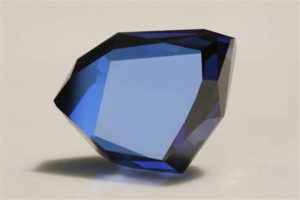
New Look at an Old Stone
For centuries, no conclusive proof existed that the Hope Diamond had been cut from the French Blue, or that the latter had been cut from the Tavernier Diamond. But in 2007, a Paris museum curator discovered a lead cast of the French Blue from which researchers prepared a three-dimensional, digital image. Comparisons with images of the Hope Diamond proved that the Hope had indeed been cut from the French Blue.
Researchers then computer-imaged the Tavernier Diamond based on Jean-Baptiste Tavernier’s detailed drawings from the late 1660s. Image comparisons confirmed that both the Hope Diamond and the French Blue had once been the Tavernier Diamond
A museum cataloging label also indicated that the lead cast of the French Blue dated to 1812 when the stone’s owner was a “Mr. Hoppe of London,” strongly suggesting that Henry Philip Hope had acquired the diamond not long after its theft during the French Revolution, then recut it to disguise its identity to avoid a French repossession lawsuit. After apparently passing the diamond on to Daniel Eliason, Hope seems to have reacquired the stone 25 years later shortly before his death.
Grading The Hope DiamondWhen the Hope Diamond was formally graded for the first time in 1988, Gemological Institute of America experts noted its exact weight as 45.52 carats and described its cut as “cushion antique brilliant,” its color as “fancy, dark grayish-blue,” and its symmetry as “fair to good.” They also classified the Hope as a very rare type IIb (traces of boron, absence of nitrogen) diamond. And contrary to many historical assessments, the Hope is not flawless. Its clarity grade is VS1, short of the highest VS2 grade because of faint, whitish graining, minor inclusions called “feathers,” and several wear marks—the latter not surprising considering the stone’s often turbulent history. |
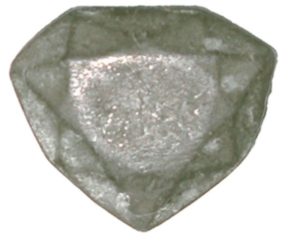
“Proof” of the Curse?
Researchers have also learned that the Hope Diamond, when exposed to shortwave ultraviolet light, glows like a burning red ember. While many blue diamonds exhibit this same fluorescence, none match the Hope’s fiery intensity. Gemologists attribute this unusual fluorescence to traces of boron that also produce the Hope’s distinctive blue color. This boron interacts with other trace impurities, enabling electrons within the stone’s crystal lattice to absorb energy from ultraviolet light, and then release it as visible red light.
While gemologists agree that this fluorescence adds to Hope’s uniqueness, intrigue, and mystery, others attribute its eerie red glow to a demonic presence.
Despite the dark legends that still surround the Hope, this celebrated blue diamond has certainly not cursed the Smithsonian, which has benefited enormously through worldwide attention along with substantially increased gifting and visitor attendance.
This story about the Hope Diamond curse previously appeared in Rock & Gem magazine. Click here to subscribe. Story by Steve Voynick.




